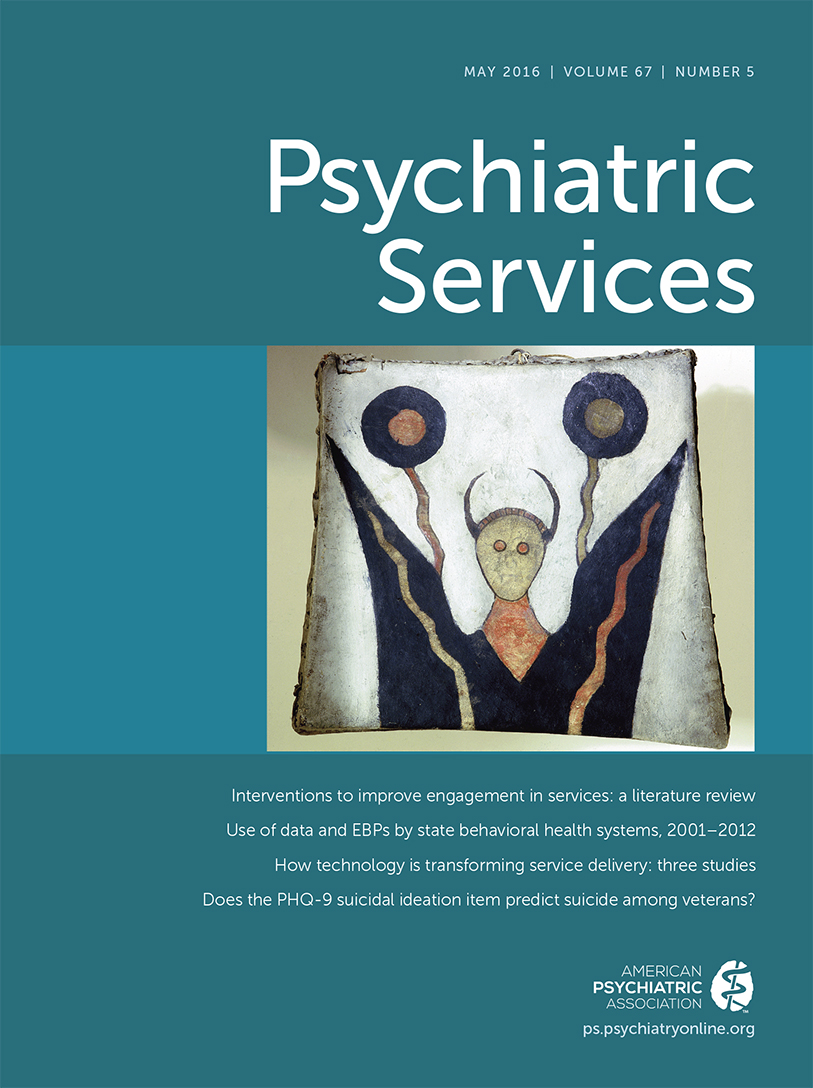This Month’s Highlights
Interventions to Improve Treatment Retention
Among Americans with mental disorders, fewer than half initiate services, and only a third of those make enough visits for their treatment to be minimally adequate. A systematic review of interventions to improve retention in treatment found that many address similar factors, most commonly mental health knowledge, attitudes toward mental health treatment, and barriers to treatment. Eleven well-designed research studies met inclusion criteria for the literature search conducted by Jennifer A. Greene, M.S.P.H., and colleagues. The interventions described in these studies produced medium to large effects on retention outcomes, with stronger effects for the more comprehensive interventions. The authors found that the most successful interventions target more than one factor, combining education about mental illness with information about mental health attitudes and barriers to treatment (page Original article: 485).
Worrisome Trends in State EBT Investment
Many stakeholder groups have called for increasing the availability of evidence-based treatments (EBTs) in public behavioral health systems and for systematic use of data for quality improvement. However, the findings of a study by Eric J. Bruns, Ph.D., and colleagues suggest that state mental health authorities’ investment in EBTs, implementation infrastructure, and use of research is not keeping pace with expectations. The authors looked at survey data collected by the National Association for State Mental Health Program Directors Research Institute between 2001 and 2012 about the nature and extent of state investments in EBTs. Many states have invested in infrastructure to encourage and support EBT implementation, but the impact of these efforts has been relatively small. Perhaps more worrisome, according to the authors, adoption by states, numbers served, and penetration rates were found to be flat or declining (page Original article: 496).
Inpatient Care: Three Studies
Three studies in this month’s issue examine aspects of hospitalization. In the first, Elizabeth M. La, Ph.D., M.S.E., and colleagues explored supply-side approaches to reducing wait times for beds in one of North Carolina’s three state psychiatric hospitals. By late 2012, patients were being held in emergency departments for an average of three days before a state bed became available, highlighting substantial capacity shortfalls. The authors found that to reduce average wait times below 24 hours, capacity would need to be increased by 165%, or 356 beds—a major investment for any state (page Original article: 523). In the second study, Leslie C. Hedman, J.D., and colleagues analyzed data from a 2014 survey of emergency hold laws. They found that only 22 states require judicial review of the hold process and only nine require a judge to certify commitment before hospitalization (page Original article: 529). In a letter to the editor, the authors provide a link to a database of laws updated to February 2016 (page Original article: 578). In the third study, Mette Jørgensen, R.N., M.H.Sc., and colleagues analyzed data from psychiatric units in Denmark. They found that patients admitted to high-volume units were more likely to receive high-quality care, providing further evidence for the association between high admission volume and better clinical outcomes for a variety of medical conditions (page Original article: 536).
Technologies and Treatments: Three Studies
Three brief reports examine ways in which technologies are being used to deliver services and reduce stigma. In the first, Dror Ben-Zeev, Ph.D., and colleagues pilot-tested a smartphone app with 20 patients with schizophrenia who agreed to carry smartphones with embedded sensors (accelerometers, microphone, global positioning system, WiFi, and Bluetooth) that collected behavioral data and ascertained patients’ location, activity, and exposure to human speech as they went about their day. Nearly all the patients felt comfortable using the app, and two-thirds were interested in receiving system-generated feedback (page Original article: 558). In the second study, David Farabee, Ph.D., and colleagues tested the feasibility of telepsychiatry for parolees with psychiatric disorders, a promising use of technology in states with rural populations that are distant from clinical services. Parolees were randomly assigned either to outpatient telepsychiatry sessions or in-person treatment sessions. After six months, those in the telepsychiatry intervention expressed high levels of satisfaction, but they were less satisfied with the therapeutic alliance compared with the control group (page Original article: 562). In the third study, researchers were able to reduce stigmatizing attitudes and beliefs about people with mental illness among primary care providers. Elizabeth H. Flanagan, Ph.D., and colleagues tested an intervention called “Recovery Speaks,” a one-hour performance in which eight to ten individuals with lived experience of mental illness tell their recovery stories by using photos to illustrate their narratives. Primary care providers who attended their presentations reported changed attitudes toward people with mental illness. One called the show “an excellent reminder of the complexity of all people's lives” (page Original article: 566).



